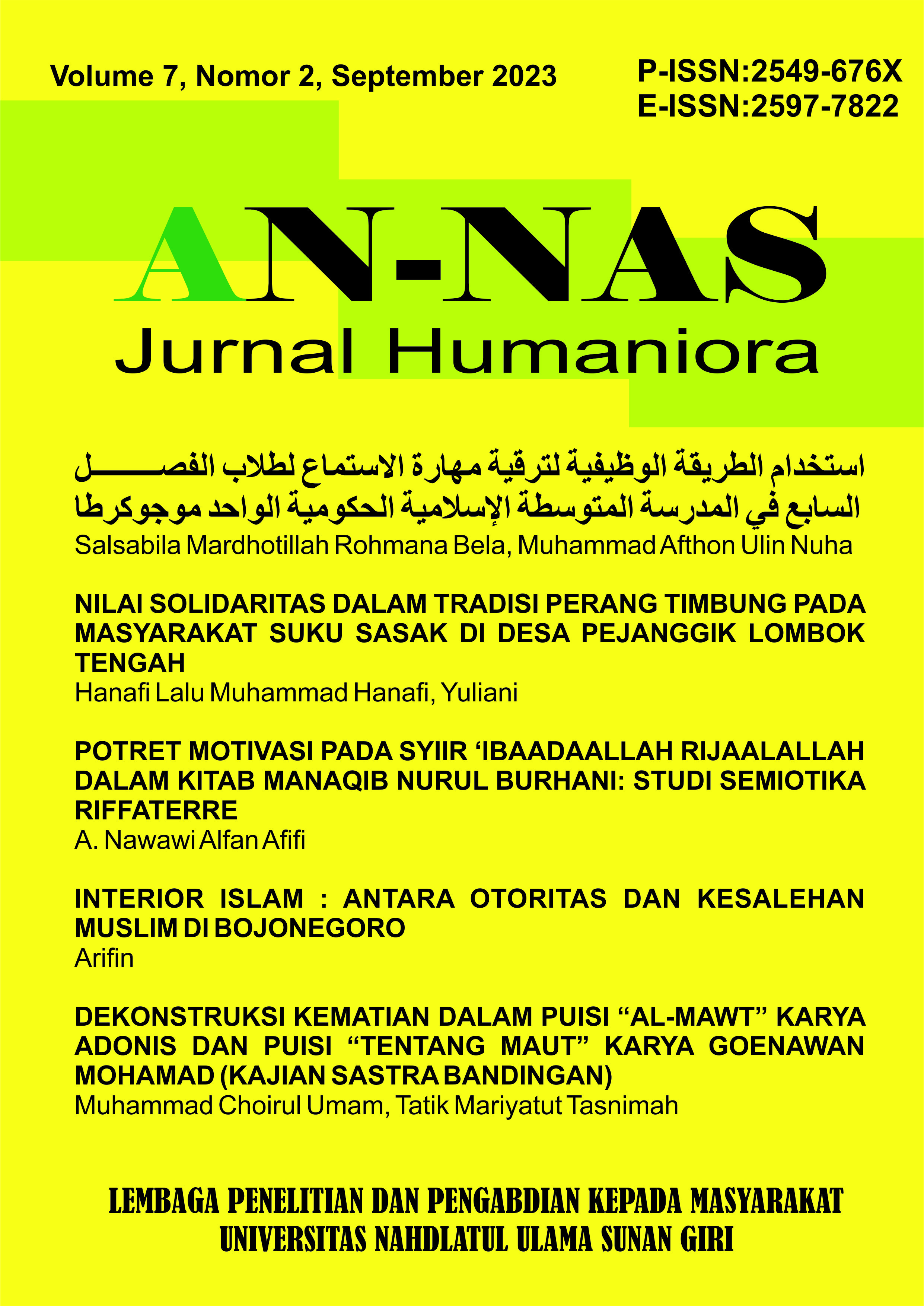Respect for Arab Women: A Case of Love Language in Alkhallat+
 PDF Download: 251
PDF Download: 251
DOI:
https://doi.org/10.32665/annas.v7i2.2253Keywords:
Alkhallat , Misogynistic, Women's RespectAbstract
Arabs are known as a nation that does not value women. Historical facts speak that they viewed women as despicable creatures and free to exploit. The appearance of Alkhallat+ in modern times with scenes that seem to appreciate women then raises the question of whether there is a shift in perspective in viewing women. Research is needed to uncover the extent of the use of misogynistic language and female respect in this film. The result of this study is that Alkhallat+ is one of the films that carry the values of respect for women. In this film, some scenes show how men view women as respectable human beings. There has been a shift in the perspective of women influenced by public awareness, as stated in the "Vision 2023 KSA". The forms of respect found in the film are praise, possessiveness, and giving in to put women first. From the linguistic aspect, the language used in carrying a positive view of women is a form of istifham, tasbih, and the use of lafaz jalalah as an argumentation reinforcement, a tradition not missed in Arab conversations.
References
Al-Saud, K. S. I. A. (2020). Vision 2030 Kingdom of Saudi Arabia. In Government of Saudi Arabia. https://vision2030.gov.sa/download/file/fid/417
Alammari, F. (2023). Alkhallat+.
Arebi, S. (1994). Women and Words in Saudi Arabia: The Politics of Literary Discourse. Columbia University Press.
Fajar, N., & Rasyidah. (2021). Dinamika Sosial Kedudukan Perempuan di Arab Saudi Era Raja Salman. Takammul, 10(1), 47–58.
Hamdan, A. (2005). Women and education in Saudi Arabia: Challenges and achievements. International Education Journal, 6(1), 42–64.
Idris, M. (2020). GAYA BAHASA ISTIFHÂM : Al-Lubab, 6(2), 58–76.
KBBI Daring. (2016). Badan Pengembangan Dan Pembinaan Bahasa. https://kbbi.kemdikbud.go.id/
Latifi, Y. N. (2015). DEKONSTRUKSI JENDER DALAM CERPEN “ANA> AL-MAWT” KARYA TAWFI>Q AL-H}AKI>M. WIDYAPARWA, 43(2), 125–140. https://doi.org/10.26499/wdprw.v43i2.112
Rachmawati, F. M. (2018). Analisis Wacana tentang Diskriminasi Gender dalam Film “Wadjda” [Universitas Islam Negeri Syarif Hidayatullah]. http://journals.sagepub.com/doi/10.1177/1120700020921110%0Ahttps://doi.org/10.1016/j.reuma.2018.06.001%0Ahttps://doi.org/10.1016/j.arth.2018.03.044%0Ahttps://reader.elsevier.com/reader/sd/pii/S1063458420300078?token=C039B8B13922A2079230DC9AF11A333E295FCD8
Rashti, G. R. (2003). Women and education in post revolutionary Iran. International Political Science Association Congress, 42.
Smith, D. E. (1987). The Everyday World as Problematic. Toronto University Press.
Downloads
Published
 PDF Download: 251
PDF Download: 251







